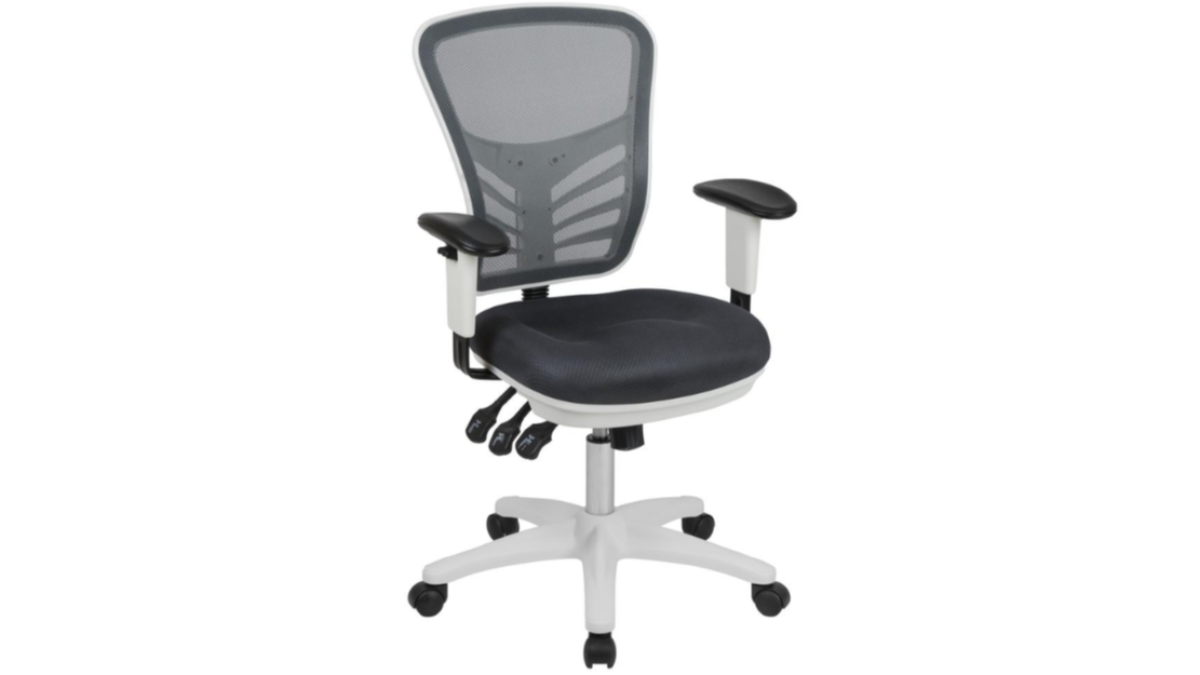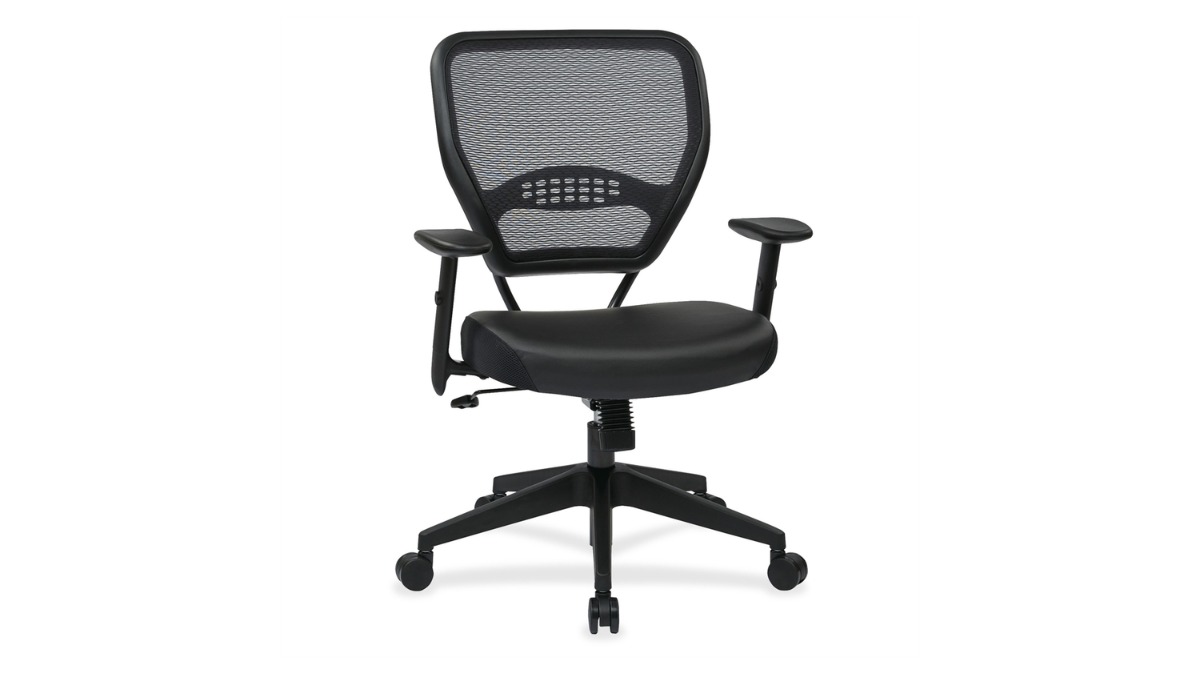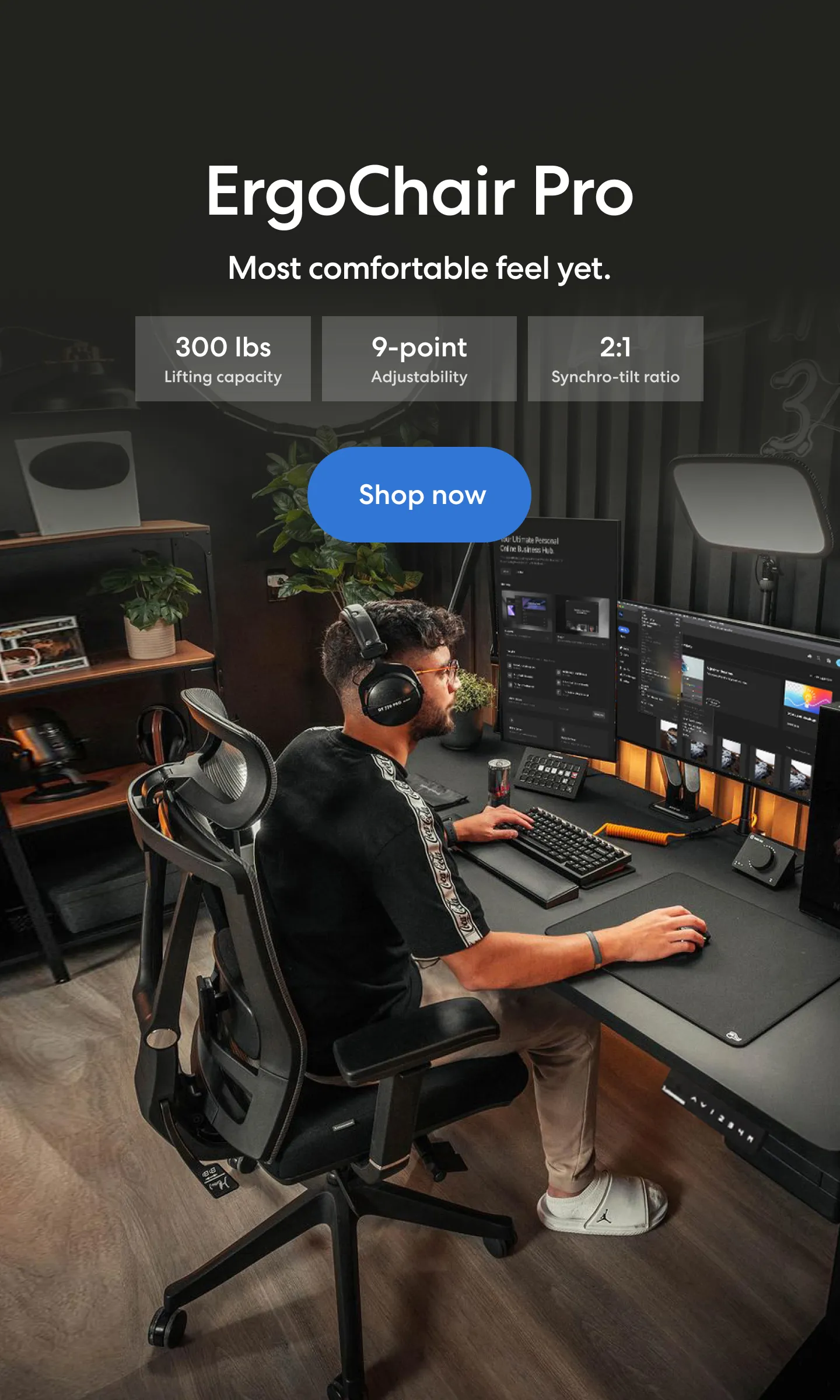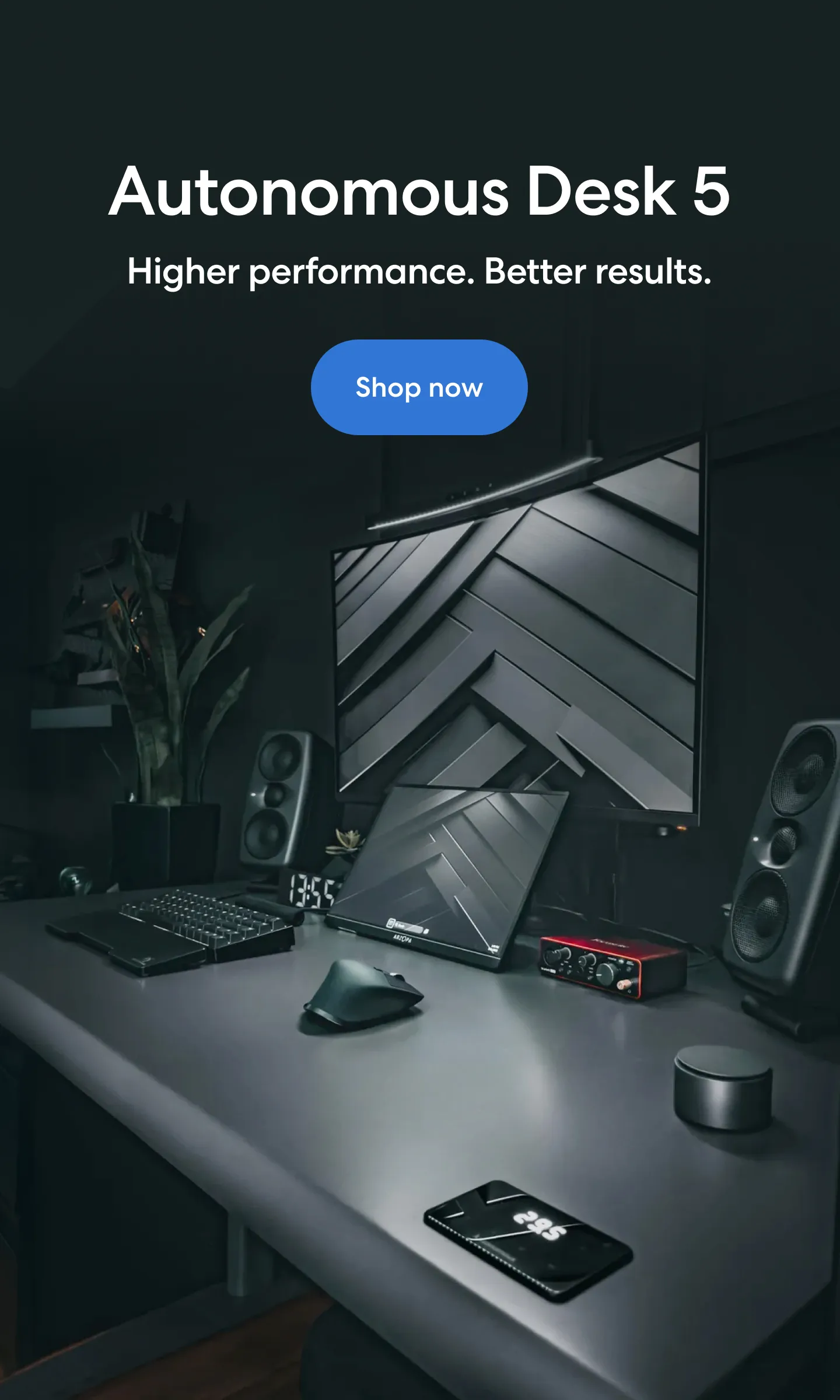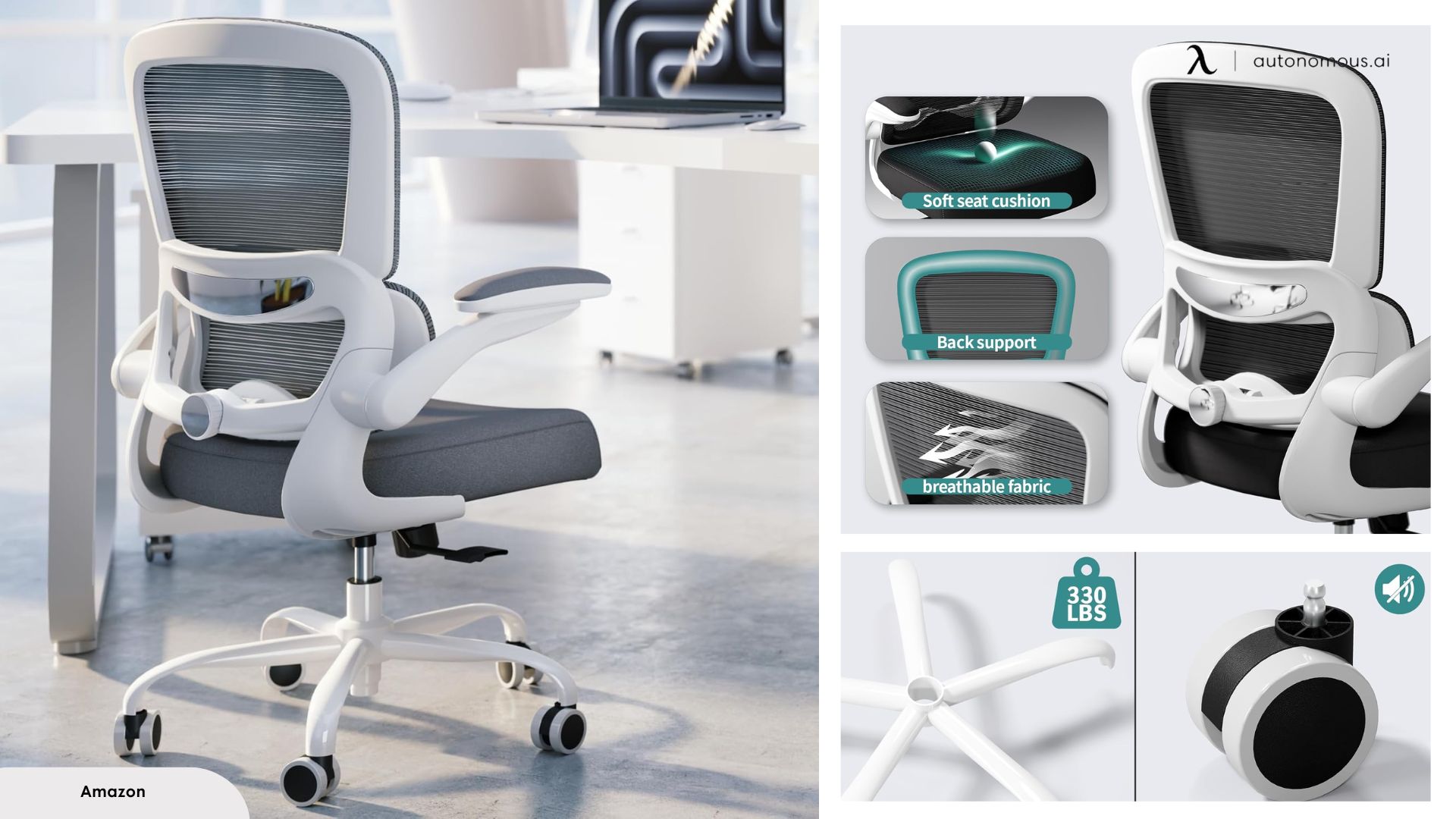
The Best Low Back Office Chairs With Lumbar Support
Table of Contents
When it comes to back support, a full-size high back office chair isn’t your only option. A low back office chair with lumbar support offers a more compact yet still effective solution for those who need targeted spinal support without the added bulk.
This chair type focuses on stabilizing the lower spine—right where discomfort often starts—while still giving your upper body full range of motion. It’s especially useful for users who alternate between sitting and standing, work in smaller spaces, or only spend a few focused hours at a desk.
Low back chairs are sometimes overlooked in favor of larger ergonomic office chair designs, but with proper lumbar integration, they offer a smart blend of simplicity and structure. If your goal is to prevent or manage discomfort, an ergonomic chair for back pain doesn’t always have to be oversized. These streamlined options, including a well-designed office chair for lower back pain, can support better posture and long-term comfort—without dominating your workspace.
Why Lumbar Support Is Critical in a Low Back Chair
Low back office chairs are known for their compact shape—but without proper lumbar support, that minimal design can come at the cost of your comfort. The lumbar spine, located in the lower part of your back, naturally curves inward. When unsupported, that curve tends to flatten over time while sitting, leading to slouching, stiffness, and even chronic pain.
This is where lumbar support in a low back chair becomes essential. A well-designed chair will include either a fixed or adjustable contour that supports the lower spine’s natural curve. Even without upper back or neck coverage, this small adjustment helps reduce spinal pressure and promotes better alignment throughout the day.
The effectiveness of the support also depends on positioning. To get the most benefit, it’s important to understand where lumbar support should be—typically at the small of your back, just above the pelvis. A properly placed cushion or contour keeps your core engaged and prevents your back muscles from doing all the work.
In short, if you’re choosing a low back chair, lumbar support isn’t optional—it’s what turns a stylish seat into a functional ergonomic tool.

Benefits of a Low Back Office Chair with Lumbar Support
A low back office chair may look simple, but when it includes lumbar support, it delivers real ergonomic value—especially for users who don’t need full upper back or headrest coverage.
1. Encourages Natural Posture
Lumbar support keeps your spine aligned by supporting the lower back’s natural inward curve. This reduces the tendency to hunch forward, which often leads to discomfort during long hours of desk work.
2. Eases Lower Back Tension
By taking the pressure off your spinal muscles, a contoured low backrest can help alleviate tightness and fatigue that build up from static sitting positions.
3. Keeps Workspaces Light and Open
Low back chairs are visually minimal and take up less space—making them perfect for modern layouts, compact rooms, or multi-purpose home offices that don’t need bulky furniture.
4. Allows Upper Body Freedom
These chairs give your shoulders and arms full mobility—especially useful if you shift between tasks, swivel between screens, or just prefer a more open sitting experience.
5. Versatile for Sit-Stand and Task-Based Workflows
If you switch between sitting and standing or work in short, focused blocks, a low back chair with lumbar support complements that rhythm without overcomplicating your setup.
When used correctly, this type of chair can offer the essential back support most people need—without sacrificing flexibility or aesthetics.
Key Features to Look For
Choosing the right low back office chair with lumbar support means knowing which features actually contribute to comfort and posture—not just looks. Here’s what to prioritize:
- Built-in or Adjustable Lumbar Support
Look for a chair that has a clearly contoured lower backrest or an adjustable lumbar pad. The goal is to keep your lower spine supported without forcing your posture.
- Contoured Backrest
The shape of the backrest should mimic the natural curve of your spine. A slight inward dip at the lumbar region helps maintain alignment throughout the day.
- Seat Height and Tilt Adjustments
A seat that adjusts to your body keeps your feet flat, knees at 90 degrees, and hips balanced. Proper positioning is key—explained further in the ideal office chair height guide. Tilt functions are also helpful for relieving lower back pressure during longer work sessions.
- Armrest Design
Supportive armrests ease tension in the shoulders and forearms. Whether they flip up or adjust in height, they add comfort—especially in a low back office chair with arms, where upper back mobility is part of the appeal.
- Breathable Back Material
Mesh or perforated fabric backs promote airflow and help you stay cool while working. If you’re comparing materials, it’s worth learning more about different types of chair seat materials or exploring a quality mesh chair for long-term breathability.
- Base Mobility
A smooth-rolling caster base and swivel function make it easier to move between zones in your workspace without overextending or twisting your spine.
Whether you're creating a new home office or upgrading your current setup, these core features will shape both your comfort and your health. If you're also considering budget or demographic needs, you might find options like the best chair for lower back pain at home for elderly, the best office chair for lower back pain under $300, or a more affordable office chair for lower back pain useful as a starting point.
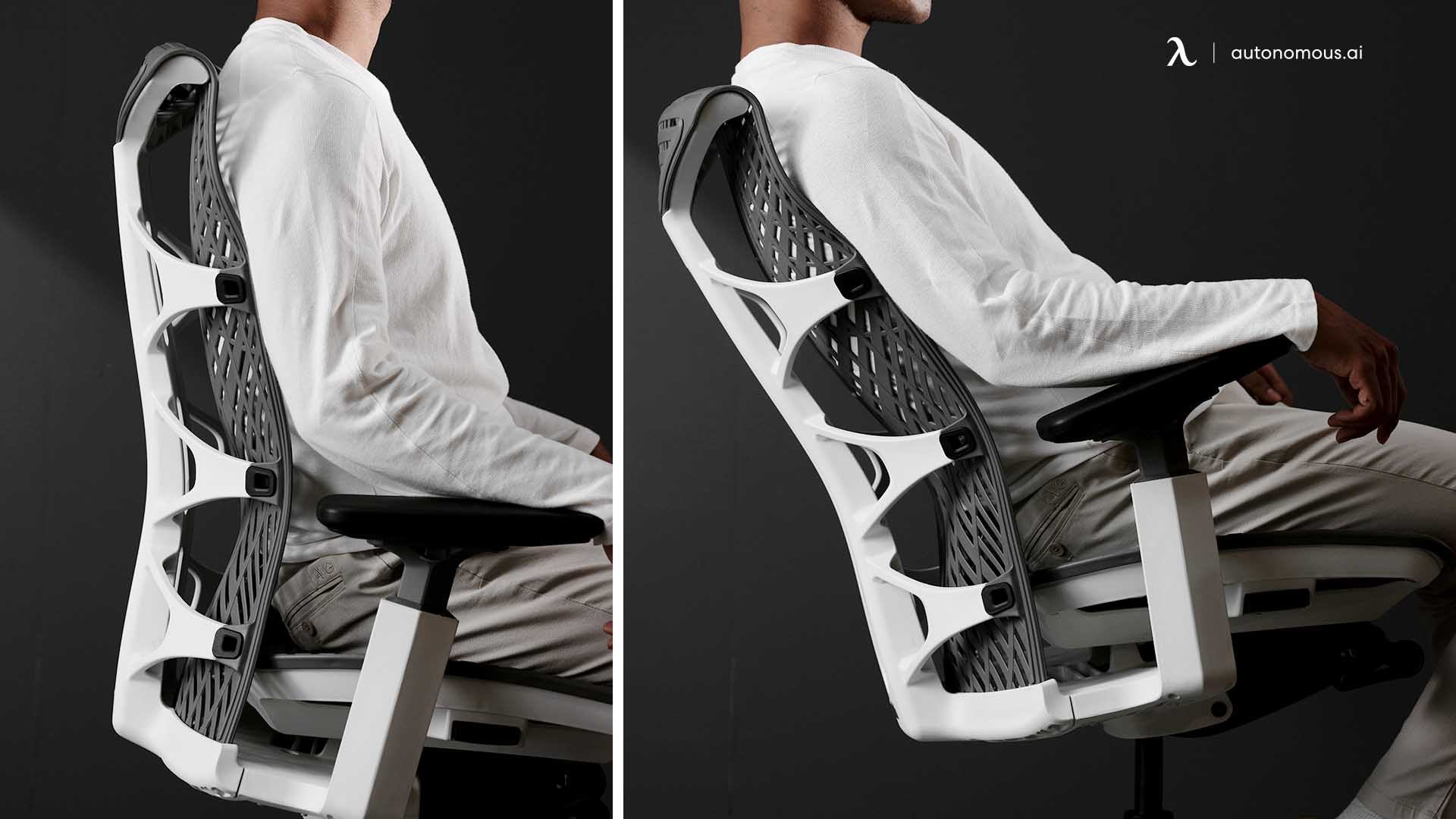
Best Low Back Office Chairs with Lumbar Support
When you're spending long hours in front of a screen, the difference between getting through the day and thriving through it often comes down to one thing: proper support. I tested a wide range of chairs for lumbar comfort, adjustability, and daily usability—and these two low back models stood out for their performance and ergonomic design.
1. Skyline Decor Mid-Back Office Chair with Adjustable Arms
This chair is a multifunctional powerhouse. From the moment I sat in it, I could feel how dialed-in it was for people who demand both flexibility and structure. The built-in lumbar support is firm but forgiving, and I especially appreciated the adjustable back height knob, which let me reposition the lumbar pressure exactly where my lower spine needed it.
What really impressed me, though, was the infinite-locking back angle adjustment. I could recline just slightly when needed and lock it in without feeling like I’d fall backward—a subtle feature, but a game-changer for long workdays. The mesh back kept me cool even during a few hours of non-stop work, and the padded seat with contoured foam struck the right balance between firm and plush.
The padded, height-adjustable arms gave welcome relief to my shoulders, especially during long typing stretches. And aesthetically, the white frame adds a modern touch that elevated my home setup without being distracting.
What stood out:
- Lumbar height adjustability
- Multi-angle tilt lock for active posture changes
- Breathable mesh back with a firm, contoured seat
- Polished design that fits both professional and creative spaces
Best for: Users who want deep lumbar control, love adjusting their sitting angle often, and appreciate a chair that performs well across both work and gaming sessions.
Specs:
- Dimensions: 25.5"W x 24.5"–27"D x 37"–44.25"H
- Seat Height: 19"–24"
- Backrest Height: 18.5"
- Weight Capacity: 250 lbs
2. Trio Supply House Space Seating Bonded Leather Mid-Back Chair
This chair takes a softer approach, but still holds its own in the lumbar support department. It’s a good choice for people who prefer a slightly more padded, traditional feel. The built-in lumbar support is integrated into the mesh back, and while it’s not adjustable, it does a great job of aligning the lower back naturally when you’re seated upright.
I used it for a week in a mid-size office setup and found the pneumatic height adjustment smooth and consistent. The 2-to-1 synchro tilt let me recline while keeping my feet flat, which helped maintain a healthy posture throughout the day. The angled padded arms added another layer of ergonomic relief, especially when I was typing or editing for long stretches.
What I liked most was the mix of materials—the mesh back kept things breathable, while the bonded leather seat gave a sleek, cushioned feel. The waterfall seat edge also took pressure off my legs, something I really noticed after sitting for 2–3 hours straight.
What stood out:
- Comfortable padded seat with waterfall edge
- Recline function with adjustable tilt tension
- Breathable mesh back with natural lumbar curve
- Soft, height-adjustable arms that actually help shoulder tension
Best for: Those who want a balance of plushness and support in a classic black office chair, and prefer fewer adjustments but solid ergonomic fundamentals.
Specs:
- Seat Width/Depth: 20.5" x 19.5"
- Seat Height: 18.75"–23"
- Back Height: 18.5"
- Weight Capacity: 250 lbs
- Chair Weight: Approx. 40 lbs
Both of these chairs offer lumbar-focused support in compact, mid-back designs—but their strengths cater to different work styles. The Skyline Decor chair is all about dynamic control and customization, while the Trio Supply House chair leans more into cushioned comfort and a straightforward, supportive build. Either one can transform a basic workstation into a setup that actually supports your spine where it matters most.
FAQs
Do low back office chairs with lumbar support actually help posture?
Yes. A well-designed low back chair with proper lumbar support helps maintain the natural inward curve of your lower spine. This reduces slouching and encourages a more upright, balanced sitting posture.
Is lumbar support necessary in a low back chair?
Absolutely. Without it, the lower spine often collapses into a rounded position, leading to fatigue and discomfort. Lumbar support in low-profile chairs compensates for the lack of upper-back structure by reinforcing your foundation.
Can I use a low back chair with lumbar support all day?
You can—if the chair is well-built and adjusted to your body. It’s important to take breaks, shift your position, and pair your chair with good habits like how to sit with lower back pain to avoid stiffness or strain.
Is a low back chair better than mid-back or high-back?
It depends on your use case. If you work long hours or need upper back and neck support, mid or high-back chairs might be better. But for task-focused work, shorter sessions, or active sit-stand setups, low back chairs offer freedom and support without bulk. You can learn more from this mid back vs high back chair comparison.
How can I relieve lower back tension from sitting?
Even with the right chair, it helps to stay active. Try the single best exercise for lower back pain or stretch periodically to release built-up tension in your spine.
Conclusion
A low back office chair with lumbar support brings together two key elements: posture correction and space-conscious design. Whether you're building a compact home office or upgrading your shared workspace, these chairs give you the core support you need without adding bulk or visual clutter.
The right model can help reduce fatigue, improve focus, and support better sitting habits. Combined with mindful movement and a bit of spinal care throughout the day, choosing a lumbar-supported low back chair is a simple yet meaningful step toward a healthier work routine.
Your back deserves more than just a seat—it deserves proper support where it matters most.
Spread the word
.svg)

